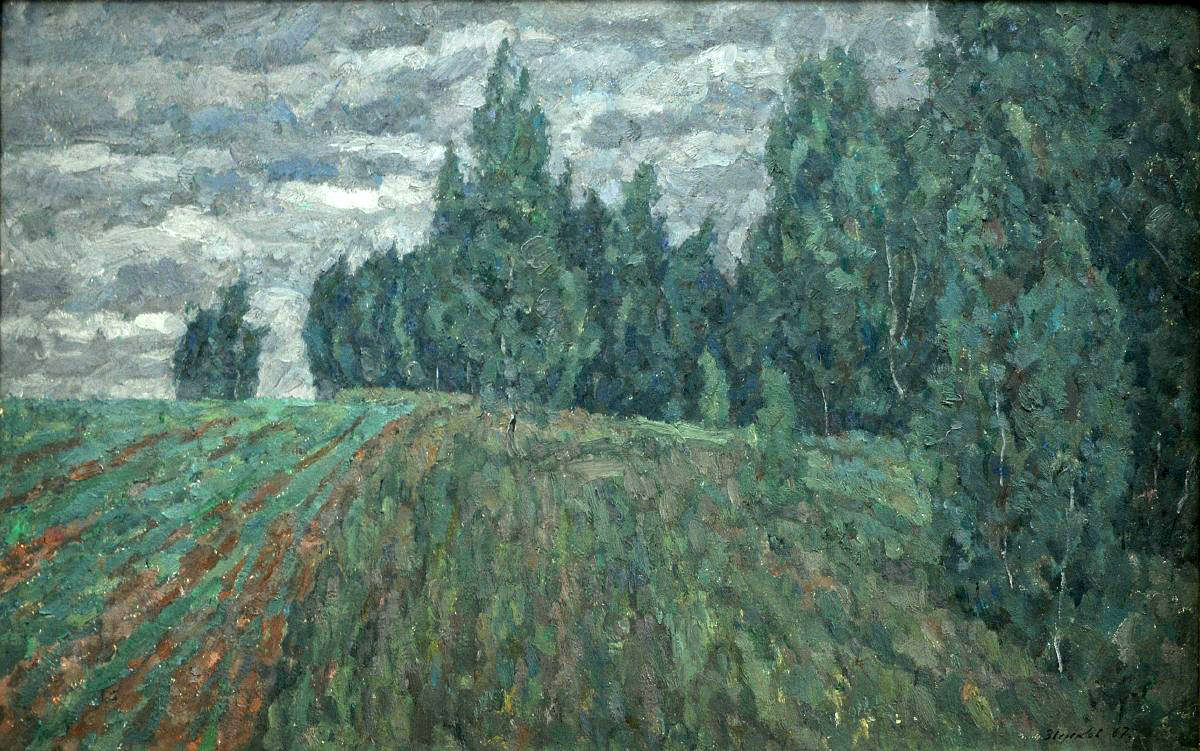The Kherson Museum of Art in Ukraine says it has identified about a hundred works of art that it says were stolen by the Russians during their occupation of the city, which lasted about eight months. “The identification of the stolen artworks is ongoing,” the museum writes on its Facebook page. “Many of the artworks stolen by the Russians from the Kherson Art Museum are 100 percent in the hands of the occupiers. The looters document their crimes with their own hands and this allows us to determine where at least part of the stolen property is located.” The Kherson museum refers to a propaganda video that was filmed in September 2023 at the Central Tauride Museum in Sinferopolis, Crimea, where at least part of the works taken from Kherson would be located.
Among the works identified in the video aired on Russian TV are three that belong to him, according to the Kherson museum: the Fishermen by the Seashore (1932) by Ivan Shulga (1889 - 1956), a painter originally from Kherson oblast who spent much of his life working in Kharkiv, and whose work belongs to a propaganda cycle part of the socialist realism tradition, in which the master glorifies the work of fishermen, milkmaids and other Soviet workers; a watercolor by Venera Takaeva (1931), a master watercolor painter whose work is dominated by still lifes and portraits; A Dreary Day (1967) by Yefrem Zverkov (1921 - 2012), an artist active in the 1960s who was one of the founders of the “rigorous style” and is one of the most famous Russian landscape painters of the 20th century.
“Actually,” says the museum, “the 100 works identified are a drop in the ocean, less than 1 percent of what was stolen, because under the pretext of the so-called ’evacuation,’ the occupiers took away more than 10,000 works of art. But every painting, every graphic work, every artwork -- everything we identify is irrefutable proof that the stolen works (at least these) are in the hands of Russian art looters. And so that the criminals, as is their habit, do not say that ’they were not there,’ we capture as much as possible everything we see in photos and videos.”

Other works would be found, according to the Ukrainians, in the town of Henichesk, which is located in Kherson oblast on the Black Sea coast and has not yet been liberated: it has been occupied by the Russians since the beginning of the invasion and on November 9, 2022, was made the capital of the occupied areas of occupied Kherson oblast. Notably, a 1916 work by Konstantin Korovin has been identified in Henichesk, according to the Ukrainians, which was exhibited on March 19, 2024 during an event organized by the Russians to mark the 10th anniversary of Crimea’s annexation by Russia (an annexation not recognized by the UN, EU, OSCE, as well as by Ukraine itself and the vast majority of the world’s states). “Our doubts that not all of the stolen collection was transported to Crimea are beginning to turn into facts,” claims the Kherson Museum of Art. “But what is most alarming is the treatment given by these pseudo-museologists to the masterpiece: a picture without a frame, without protective glass, in close proximity to the paintings.... ”. According to the Ukrainian museum, “the negligent attitude toward the masterpiece on the part of representatives of the occupying facilities and the eyewitness accounts of the theft of the museum’s collection (marauders loaded the artworks onto trucks as if they were garbage) indicate that the restorers still have work to do.”
 |
| Kherson Art Museum's complaint: 'Russians stole a hundred works from us' |
Warning: the translation into English of the original Italian article was created using automatic tools. We undertake to review all articles, but we do not guarantee the total absence of inaccuracies in the translation due to the program. You can find the original by clicking on the ITA button. If you find any mistake,please contact us.